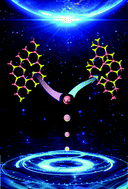Disentangling the role of oxygen vacancies on the surface of Fe3O4 and γ-Fe2O3
Abstract
The outstanding performance of Fe3O4 and γ-Fe2O3 as catalysts in various iron oxides strongly depends on their crystal structure. However, with the development of mechanistic research, surficial oxygen vacancies (OVs) have been found to play a more decisive role in determining the kinetics, energetics, and catalytic activity. A detailed description of oxygen vacancies on Fe3O4 and γ-Fe2O3 (111) surfaces is therefore essential and must be investigated by more accurate measurements. Using density functional theory with the Hubbard-U method, different oxygen vacancy species both in surface and subsurface layers are intensively discussed to probe the structure sensitivity of OVs in this work. According to the calculated energy of different configurations, γ-Fe2O3 is susceptible to the position of O vacancy sites compared with Fe3O4. Furthermore, the results of vacancy formation energy calculations indicate that surficial oxygen vacancies play a vital role in practical applications, except for the tetrahedral Fe (Fetet) termination surface in Fe3O4 which has stronger Fetet–O bonding. Moreover, the structures of oxygen molecules adsorbed on surfaces with oxygen vacancies are fully considered. There are two situations: one is that O2 can be activated to form the peroxide species (O22−) when adsorbed above the centre of a vacancy; the other is that molecular oxygen located at vacancy sites may repair original oxygen defects. These results demonstrate well the role of oxygen vacancies on Fe3O4 and γ-Fe2O3 surfaces, and provide a foundation for understanding the redox and catalytic applications of metal oxides.



 Please wait while we load your content...
Please wait while we load your content...